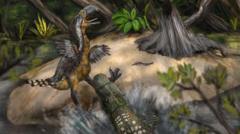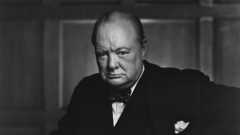As of July 19, 2025, Cedar’s presence at Holly’s Haven, a dedicated wildlife rescue center in rural Ottawa, has ignited newfound interest and challenges for its staff. Cedar, a blind moose calf recovering from a leg injury, has quickly become the focal point of the center, which is currently home to various species, including a coyote and several young raccoons and skunks.
The center’s founder, Lynne Rowe, is now faced with the daunting task of learning about the specific needs of young moose, particularly because Cedar's injuries prevent any possibility of returning him to his natural habitat. Experts in wildlife rehabilitation have consistently warned Rowe that without the ability to see or skillfully navigate his environment, Cedar would not stand a chance against natural predators, such as coyotes and wolves, which would significantly threaten his survival.
Currently weighing about 30 kilograms, Cedar will grow considerably larger, potentially reaching weights up to 700 kilograms. As Rowe explained, “The best prognosis is limited vision in his right eye, making a return to the wild a death sentence.” Unlike the center's namesake, Holly, a raccoon who lived there for many years due to her brain injuries, Cedar faces unique challenges due to his size and specific needs.
Cedar's story highlights the broader implications of wildlife rescue efforts and the ethical questions surrounding the rehabilitation and release of injured animals. As Holly’s Haven works to understand Cedar's potential future, it simultaneously seeks to raise awareness about the complexities of wildlife conservation, urging the community to engage in the protection of vulnerable species.
The center’s founder, Lynne Rowe, is now faced with the daunting task of learning about the specific needs of young moose, particularly because Cedar's injuries prevent any possibility of returning him to his natural habitat. Experts in wildlife rehabilitation have consistently warned Rowe that without the ability to see or skillfully navigate his environment, Cedar would not stand a chance against natural predators, such as coyotes and wolves, which would significantly threaten his survival.
Currently weighing about 30 kilograms, Cedar will grow considerably larger, potentially reaching weights up to 700 kilograms. As Rowe explained, “The best prognosis is limited vision in his right eye, making a return to the wild a death sentence.” Unlike the center's namesake, Holly, a raccoon who lived there for many years due to her brain injuries, Cedar faces unique challenges due to his size and specific needs.
Cedar's story highlights the broader implications of wildlife rescue efforts and the ethical questions surrounding the rehabilitation and release of injured animals. As Holly’s Haven works to understand Cedar's potential future, it simultaneously seeks to raise awareness about the complexities of wildlife conservation, urging the community to engage in the protection of vulnerable species.


















